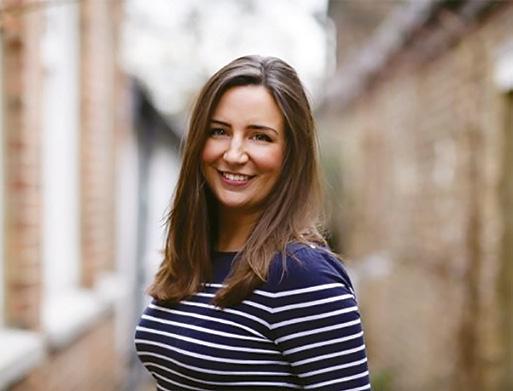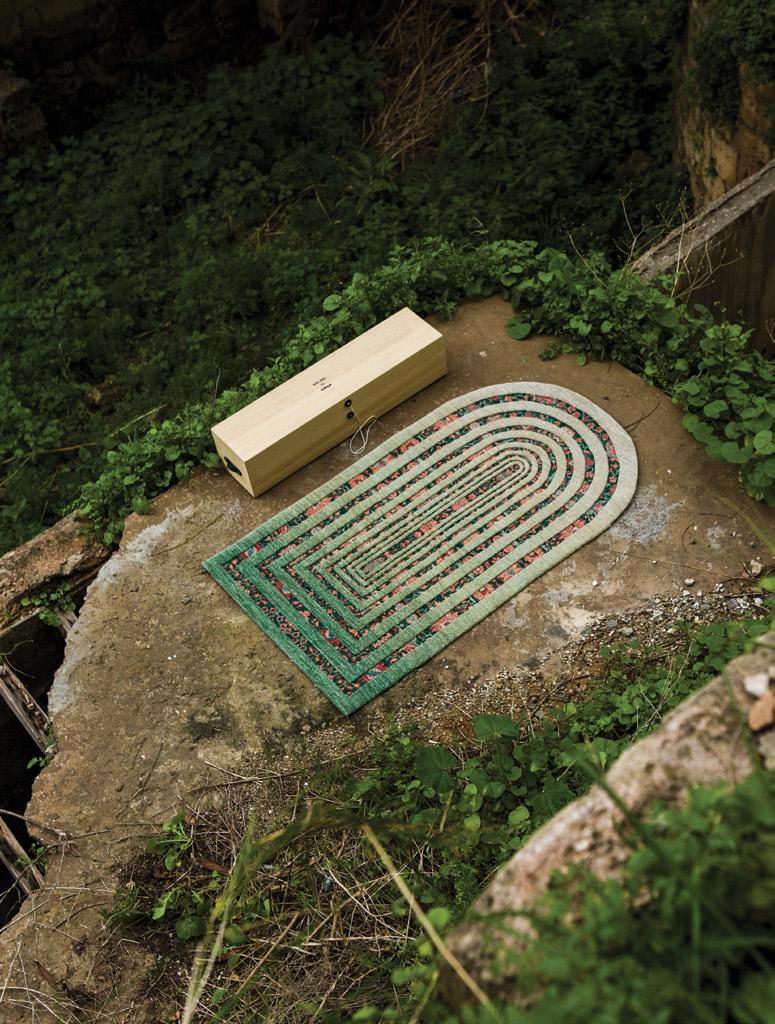
11 minute read
Newswire
Spiritual carpets
Meticulously hand-woven and divinely inspired, Lebanese designer Nada Debs’ Transcendence prayer rugs are testament to the inter-connectedness of faith. Aptly named, the carpets are not limited to one religion or belief, but aim to transcend boundaries in order to spiritually connect the faithful through prayer, peace and human fraternity. To symbolise this unity Debs has chosen the arched doorway and dome, which are recreated within the carpet weave to indicate religious architecture found across mosques, minarets, shrines and ancient churches rooted in the Byzantine architectural tradition from as early as the 7th century. The linear patterns are designed to evoke a certain depth, symbolically transporting users into a dimension of spiritual harmony. The collection’s tactile nature serves to awaken the senses as one attends to prayer or meditation. “As craft custodians, we safeguard its legacy by making craft relevant to future generations through a signature design approach,” says Debs. For the Ramadan season, the collection is presented in special, limited-edition gift boxes designed by Debs. Transcendence is the Lebanese designer’s second collaboration with Zuleya by FBMI, an initiative that supports women carpet weavers in Afghanistan.
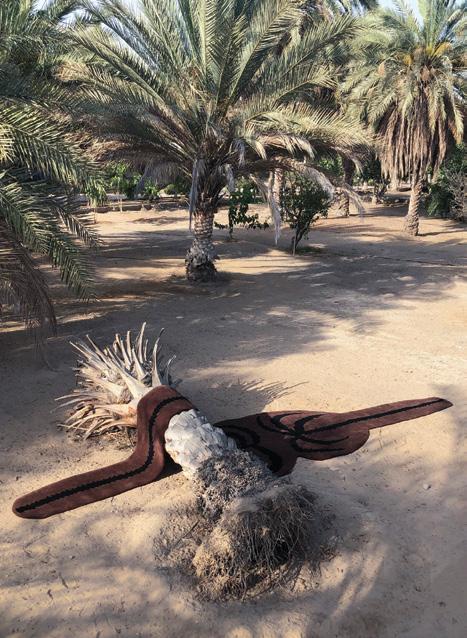
Modular moments
Heritage-inspired brand Chapter 101 has collaborated with Dubai-based furniture manufacturer SkaraBrae to create modular seating, inspired by the Eastern Mediterranean, that can be adapted to various needs. ‘Soffah’ – the historical Arabic term for the word ‘sofa’ – inspired its form, referring to the low-slung sofas that are slightly raised from the floor, which have long existed and been used across a variety of cultures. Soffah’s floor-hugging design has been reinterpreted from its traditional form into a contemporary and adaptable piece of furniture that maintains its cultural roots while bringing a sense of heritage into a space. Soffah is upholstered in a 100% eco-friendly cotton, yet can be modified through a wide variety of finishes, with the aim of allowing homeowners to express their creativity through its flexible design.
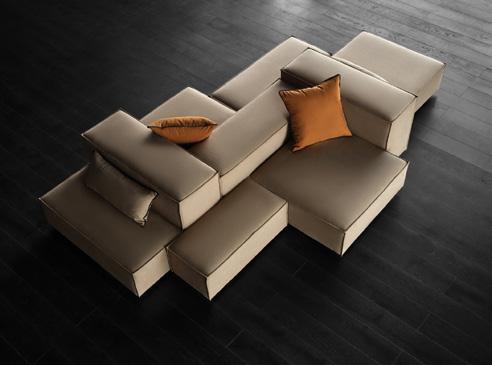
Natural inspiration
Palm trees are abundant in the Gulf region – a place that inspires Iraqi photographer, stylist and designer Cheb Moha, who is behind the homegrown lifestyle brand Shabab (among other creatives) and lives between Dubai, Kuwait City and Muscat. A self-proclaimed nomad, his fascination with the Gulf and the wider Middle East has inspired him to document the region through a variety of media; and creating objects that pay tribute to its various cultures, environments and people is part of it. Moha’s latest venture is a creative collaboration with Muscatbased design brand Altqadum (which is run by a collective of architects and designers): a hand-tufted rug made using 100% New Zealand wool that depicts a convergence of two palm trees (a motif commonly found across Moha’s various designs). The rug was created especially for a private residence, to be placed in a hallway. This informed the overall form of the rug, which appears almost like a deconstructed runner. The rug’s colour composition is a nod to the earth surrounding a palm tree, as well as to the silhouettes that the leaves and trunks make on the ground.
Pushing the limits

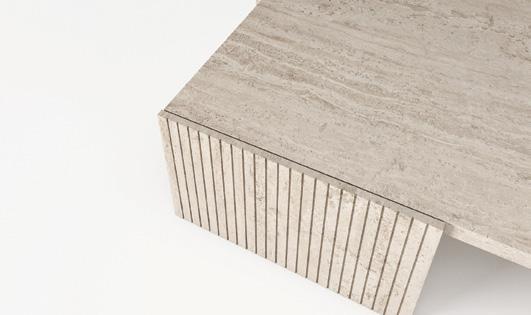
Izmir-born Buket Hoscan Bazman has a lot on her hands. She established her own design brand, Marbelous, in 2015 (which she now manages with partner Erman Bazman), with the aim of producing bespoke furniture and objects where marble is the hero. Soon after, she set up her eponymous studio, where the Turkish designer works on creating ‘timeless’ furniture pieces and lighting. Using mainly natural stone, wood and brass, Bazman focuses on combining contemporary design with traditional craftsmanship, and each piece is made by an artisan in Turkey. Her STRIPE cabinet in wood, brass and marble. personal collections are now available at Love House New York, as well as Galerie Philia and 1stDibs.
Under her eponymous brand, Bazman creates limited-edition pieces that champion material experimentation across a variety of forms.
“Marbelous has its own design language,” she shares. “All the furniture contains marble detailing, with a strong focus on adaptability. I wanted to integrate the client in the design process; therefore, all the furniture pieces are customisable. Because marble was the first material I ever worked on as a designer, its nature, form and workability inspired me.”
Although the pieces designed for her own collection are simpler but sculptural, they also contain secret handcrafted detailing realised by local artisans. “I love being involved in the production process, so I usually try to do the IO bench featuring hand-sculpted solid wood legs, bouclé fabric and patinated brass. finishing touches myself,” she says.
For Bazman, craftsmanship is the essence of the design process and one where the true quality and skill of the piece can be displayed. “I love pushing the limits when it comes to experimenting with new techniques, materials and forms,” she adds.
“My first inspiration is always the personality of materials and their potential. When I learn [to work with] a new material, it sparks my curiosity and makes me want to explore different possibilities.”
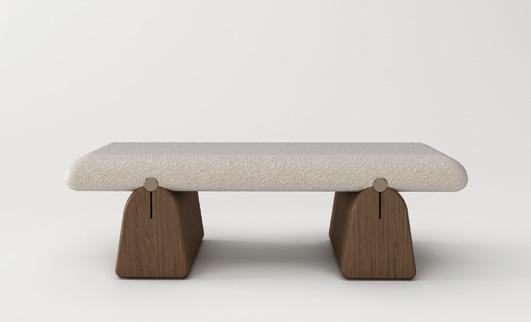
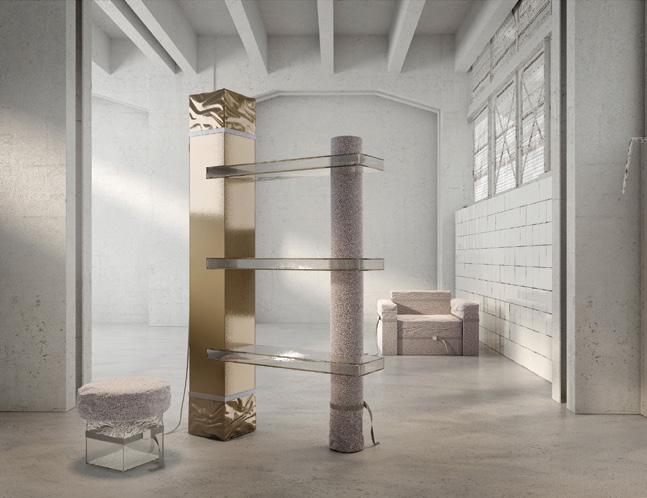
Recycled matter
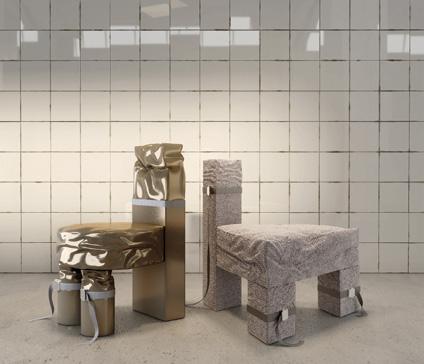
Lebanese designer Richard Yasmine’s voluminous designs are being showcased at the second edition of 5VIE D’N’A – Design ‘n’ Art for a Better World, both physically and as part of a digital exhibition which 5VIE launched last year as a response to the COVID-19 pandemic. Yasmine’s work skilfully blends Lebanese handcrafting traditions with a contemporary sensibility, and Size Matters and Flowing Fragments – which are being exhibited as part of Milan Design City 2021 – offer a perspective on cultural research combined with a focus on environmental issues. Flowing Fragments comprises a limited edition of 16 variations of tables and stools that is part of Yasmine’s research project on producing by using scraps and leftovers and transforming them into sculptural furnishing and objects. Referencing forms found in Greco-Roman architecture, Yasmine says, “Flowing Fragments emphasises our global cultural heritage. It’s an awareness to save the remaining forgotten fragments of previous civilisations.” The second collection, Size Matters, features several playful pieces of furniture created using basic geometric shapes such as cylinders, cubes and prisms, among others, made using an array of materials such as brass and glass as well as other recycled compacted material structures that have been concealed using an oversized fabric that drapes over each item to fit its shape, and tied by a belt to fix into place. The sizeable and dynamic objects appear almost inflated and are influenced by cubist forms. The pieces intentionally reject the use of any sophisticated techniques, yet their bold shapes and whimsical configurations offer an elegant take on upcycling.
Mediterranean harmony
Natuzzi’s handcrafted furniture has always expressed the culture of the Mediterranean, and more specifically its home of Puglia, expressing its culture, lifestyle and attitudes. Its 2021 collection, The Circle of Harmony, embraces the same elements while using the concept of the ‘circle’ to express a celebration of beauty through an ideal space where different interpretations of the brand can exist.
Bringing together eight designers, all with different approaches and styles, The Circle of Harmony represents a translation of the identity of the brand through a diverse lens, while keeping in mind its Apulian roots and spirit as well as concepts of elegance, comfort and harmony.
The designers involved in the collection include Claudio Bellini, Mauro Lipparini, Maurizio Manzoni and Paola Navone, as well as first-time collaborators Marcantonio, Fabio Novembre and Nika Zupanc. It also includes a new textile collection by the Dutch textile design studio BYBORRE, created in collaboration with Pasquale Junior Natuzzi, the Chief Creative Officer at Natuzzi, as part of his vision of integrating tradition and innovation. Made with a yarn that combines high-quality wool and recycled PES, Water is a family of double-sided fabrics that are luxurious to the sight and touch, while also being extremely durable.
Perhaps the hero is Paola Navone’s Argo collection, which includes a sofa and a chaise lounge, both available in the Water textile as well as traditional leather or fabric upholstery.
Argo is inspired by the beauty of imperfection and changeability in one’s environment, similar to the movement of the sea, and takes its cues from the colours and traditions of the Mediterranean while reflecting the relaxed lifestyle of Puglia, where all the pieces are made.
The Argo sofa, with its generous dimensions, is a symbol of a particular way of interpreting life and living spaces, and features a soft look that is magnified by the 3D padding and two large brackets that sink into the backrest. The low, almost invisible feet of the sofa reinforce the idea of an extremely comfortable, inviting and enveloping seating system, perfect for moments spent in relaxation. Available in two- and three-seater versions, as well as a swivelling armchair, Argo is designed to be an island of comfort within the living area.
The Sleeping Argo chaise longue embodies a welcoming spirit which flows to accommodate various resting positions thanks to the brand’s electric mechanisms that are operated using touch buttons. Designed for comfort in both chaise longue position and in the day bed position, Sleeping Argo is covered with a particularly generous housse (in fabric or leather) that exaggerates the feeling of total and complete rest, which is further accentuated by a large bracket that pierces the backrest, ending at the back with a popglam knot.
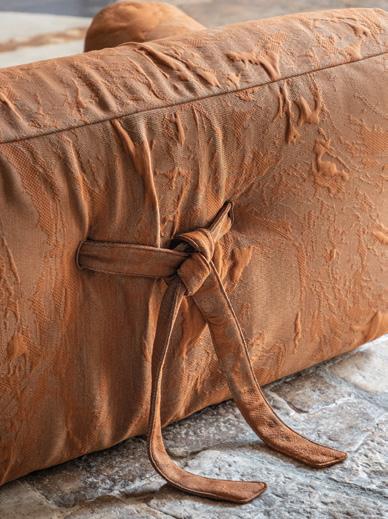

Triumphant return
The Middle East’s longest-running interior design event, INDEX, is making a return this year with a physical fair and talks programme, from 31 May to 2 June 2021. We catch up with fair director Katie McBride to learn more.
What can we expect from INDEX 2021? Visitors can expect INDEX to feel (and look!) a little different this year. There will be fewer handshakes, and much more space within the halls to enable sourcing and networking at a safe distance. The experiences, opportunities and content will be greater than ever. We even have some surprises in store, [which are] designed to inspire and enhance the full experience, thanks to some wonderful creative leaders that have collaborated with the show and designed some fabulous installations.
We’re also excited to see the show conferences evolving for the 30th edition. INDEX Design Talks has been very popular this year, and it’s been great to see their excitement in being part of this project. There’s a lot to discuss and debate after such a long time apart, so everyone’s really looking forward to this. We’ve also launched a Work Design Summit and a Retail Forum at this year’s show, to meet the demand for education on these topic areas.
All in all, it feels much more important and essential than ever before to get the industry back together in person. We can’t wait to open the doors!
What were the challenges in setting up a live exhibition during a global pandemic, and why did you feel this was
important? The biggest challenge has been the uncertainty on travel policies and whether our international exhibitors are able to participate in the fair. We’re lucky that we’re not the first or largest show to have taken place at Dubai World Trade Centre during the pandemic, so we fully trust the venue’s safety standards and protocols that have enabled them to be successful. And of course, we are very thankful to the Dubai Government for their effective handling of the pandemic, which means we’re in a position to operate earlier than other countries.
The global pandemic means it’s now more important than ever before to reconnect, find new suppliers and show the industry who is still in business. This is critical for the survival of manufacturers, retailers and distributors. They need to meet with the community to do business and, more importantly, find out ‘who is doing what’ now. Everyone needs to refresh their contact lists! For specifiers and buyers, it’s [about] finding new products that are available in the region, and learning insights from the region’s leaders.
What can we expect from the exhibitors this year – is there
a more regional presence? We have some great international brands participating at INDEX, many of whom are returning after being absent for a few years, and some who are exhibiting for the first time. Look out for Cosentino, Geberit, VitrA, Presto, Scientechnic and Eichholtz, to name a few. It has been great to see that, despite the current situation, we’ve also seen this year a huge influx of gorgeous new designer furniture coming to the show from countries such as France, Poland and Italy. ‘A Gallery’ will also be bringing artwork by the famous Christy Lee Rogers to the show, and we have lots of product launches to reveal! I could go on, but you will have to visit yourself to see the variety of products and experiences on offer.
